Why Spanish Cuisine Should Not Be Missed
Spanish gastronomy is a rich tapestry, blending together various regional influences, such as the seafood-centric dishes of galicia and the hearty stews of castilla. Each region possesses distinct culinary elements and cooking techniques, influenced by historical factors, geographical conditions, and interactions with the Romans, Moors, and other civilizations. Whether you’re enjoying small plates of tapas in a bustling Madrid bar or savoring sangria with paella by the Valencia coast, the cuisine reflects Spain’s zest for life.
A sentimental attachment to the taste of Spanish cuisine.
I will always cherish the memory of my very first taste of jamón ibérico in a quaint extremadura tavern, where the bartender skillfully cut delicate slices from a leg of ham displayed behind the counter. The rich, creamy taste was unlike anything I had ever experienced before. That experience captivated me, and I’ve been pursuing Spanish flavors ever since. Let’s delve into the top five dishes that encapsulate the essence of Spain’s culinary heritage.
1: Paella: the renowned valencian delicacy.
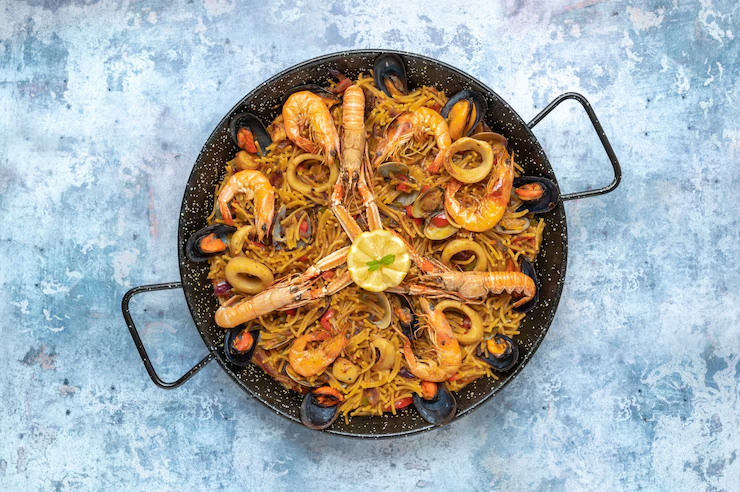
Paella is Spain’s culinary ambassador, a lively rice dish originating from the wetlands of Valencia. Typically prepared over an open flame, it’s a harmonious blend of saffron, rice, and regional ingredients such as chicken, rabbit, or seafood. The dish’s defining feature is the socarrat—the crunchy, golden-brown rice layer that forms at the bottom of the pan.
History and Meaning of Our Discovery
Originating from Valencia, paella was initially a humble peasant meal, prepared using whatever ingredients were available, such as rabbit, snails, and beans. In modern times, dishes like paella de mariscos (seafood) or paella mixta (mixed) have gained popularity, but traditionalists remain loyal to paella valenciana. It’s a dish that is commonly enjoyed together, often passed around among family and friends.
Where to attempt it.
To truly immerse yourself in the local culture, visit la pepica, a beachfront restaurant in Valencia that has been serving paella since 1898. In Madrid, Casa Benigna provides an exceptional version with flawlessly cooked bomba rice. To steer clear of tourist traps, avoid pre-made paella and instead seek out establishments where it is prepared fresh upon request.
Suggestions for Savoring Paella.
For two or more people, paella is the ideal dish to share, as the pan’s size allows for a more flavorful experience.
Seek the socarrat: scrape the crispy bottom for the most delicious part.
To enhance the flavors of the dish, pair it with a refreshing albariño or a light-bodied tempranillo wine.
2: Jamón ibérico: la carne de cerdo de España que es una de sus recetas culinarias más valiosas.
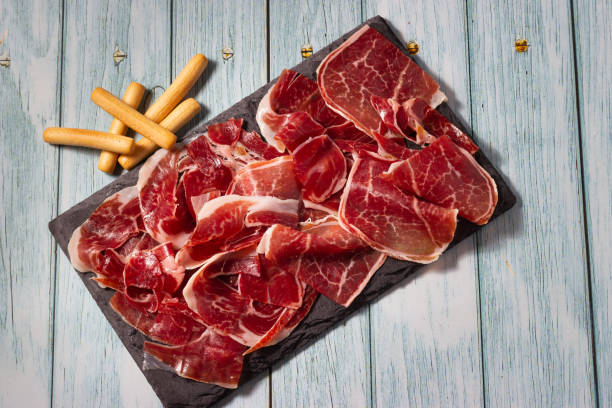
Jamón ibérico is the pinnacle of Spanish gastronomy, a delicacy made from black iberian pigs that have been fed on acorns. Its distinctive, nutty taste and creamy consistency make it a must-try, whether enjoyed in thin slices or spread over a warm slice of bread.
The craft of healing.
Jamón ibérico, primarily produced in Extremadura and Andalusia, undergoes a meticulous curing process that can last up to four years. The pigs’ diet rich in acorns imparts a unique flavor to the meat, and skilled artisans meticulously craft it to perfection.
Where to find the best jamón.
Head to the market of San Miguel in Madrid for a chance to sample jamón ibérico de bellota, the top-quality variety. In Barcelona, the ham stalls at La Boqueria are a delight. To gain a more comprehensive understanding, visit a jamón producer like cinco jotas in jabugo.
Pros and cons of jamón ibérico.
Cons:
Con:
Unparalleled taste and mouthfeel.
Costly, particularly of the highest quality.
Adaptable: excellent by itself or in recipes.
Can be hard to find authentic versions abroad.
High in nutritious fats.
Proper storage is necessary to preserve the quality.
3: Tortilla española: la omelette española más humilde.
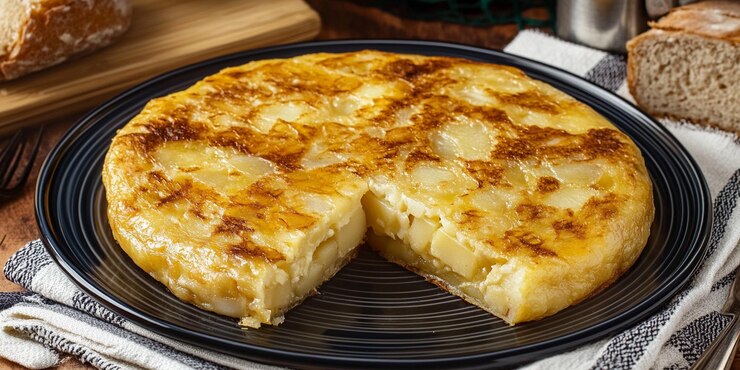
The tortilla española, also known as the Spanish omelette, is a seemingly straightforward dish made with eggs, potatoes, and onions, cooked slowly in olive oil. Its smooth and creamy interior, combined with its golden crust, makes it a popular choice in Spain, whether enjoyed at tapas bars or in home kitchens.
A meal of plainness and talent.
Although the tortilla recipe only calls for a few ingredients, achieving the perfect tortilla requires skill and precision. The secret to achieving a delicious flavor is to cook the dish at a low and slow pace, allowing the ingredients to blend together perfectly. There is ongoing debate among purists regarding the inclusion of onions in dishes, with some arguing against it, while others, like me, appreciate the delicate sweetness they bring.
Top places to enjoy it.
In Madrid, Casa Dani is renowned for its legendary tortilla with a runny center. For a unique twist, consider trying la tasquería de javi estévez, where they elevate the classic with gourmet touches. Numerous bars include it as a popular tapas option, typically served at room temperature.
How to relish tortilla española.
As a tapa: request a small portion with a glass of cava.
For breakfast, pair with coffee for a satisfying start.
At home: use premium olive oil and avoid overcooking the eggs.
4: Gazpacho: the cool and Mediterranean soup.
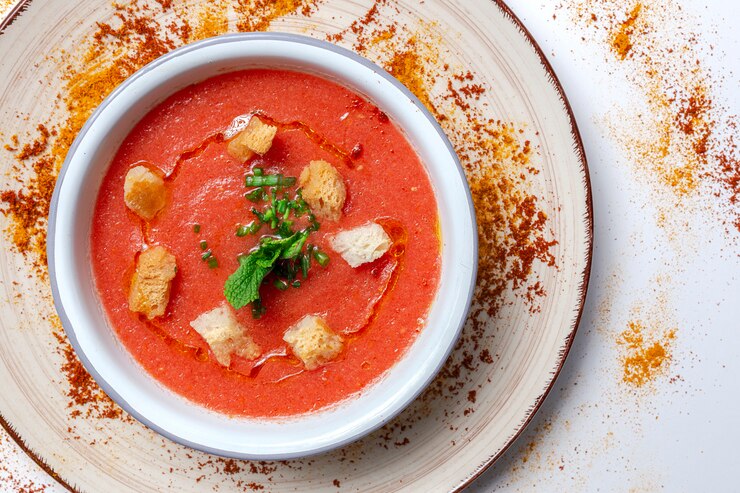
Gazpacho, a refreshing tomato-based soup, is a beloved summer dish originating from the region of andalusia. When combined with cucumbers, peppers, garlic, and olive oil, it creates a refreshing, tangy, and ideal condiment for warm weather.
A refreshing gastronomic heritage.
Gazpacho, originating from southern Spain, was a creative solution to repurpose stale bread and fresh vegetables. Its vibrant red color and zesty taste make it a refreshing remedy for Spain’s scorching summers. Salmorejo (thicker, creamier) are equally tasty.
Where to sample it.
In Cordoba, restaurante El Churrasco serves an exquisite salmorejo. For a traditional gazpacho, go for seville’s bar las teresas. While local markets may offer pre-packaged versions, it is recommended to opt for freshly made options for the best taste.
Gazpacho vs. Salmorejo: A Taste Test.
Feature:
Gazpacho is a cold soup made with tomatoes, cucumbers, peppers, garlic, onion, and olive oil. It is usually served chilled and garnished with parsley or bread. It is a refreshing and healthy dish that originated in Spain and is popular in many countries.
Salmorejo is a traditional Spanish soup made with chicken, vegetables, and a tomato-based broth. It is typically served with bread and is a popular dish in Spain.
Texture:
Light, runny.
Thick, creamy.
The key component.
Tomato is a type of vegetable.
Tomato, bread.
Garnish:
Cucumber, pepper.
Jamón, huevos.
Region:
Andalusia:
Córdoba:
5: Pimientos de padrón: the jovial galician peppers.
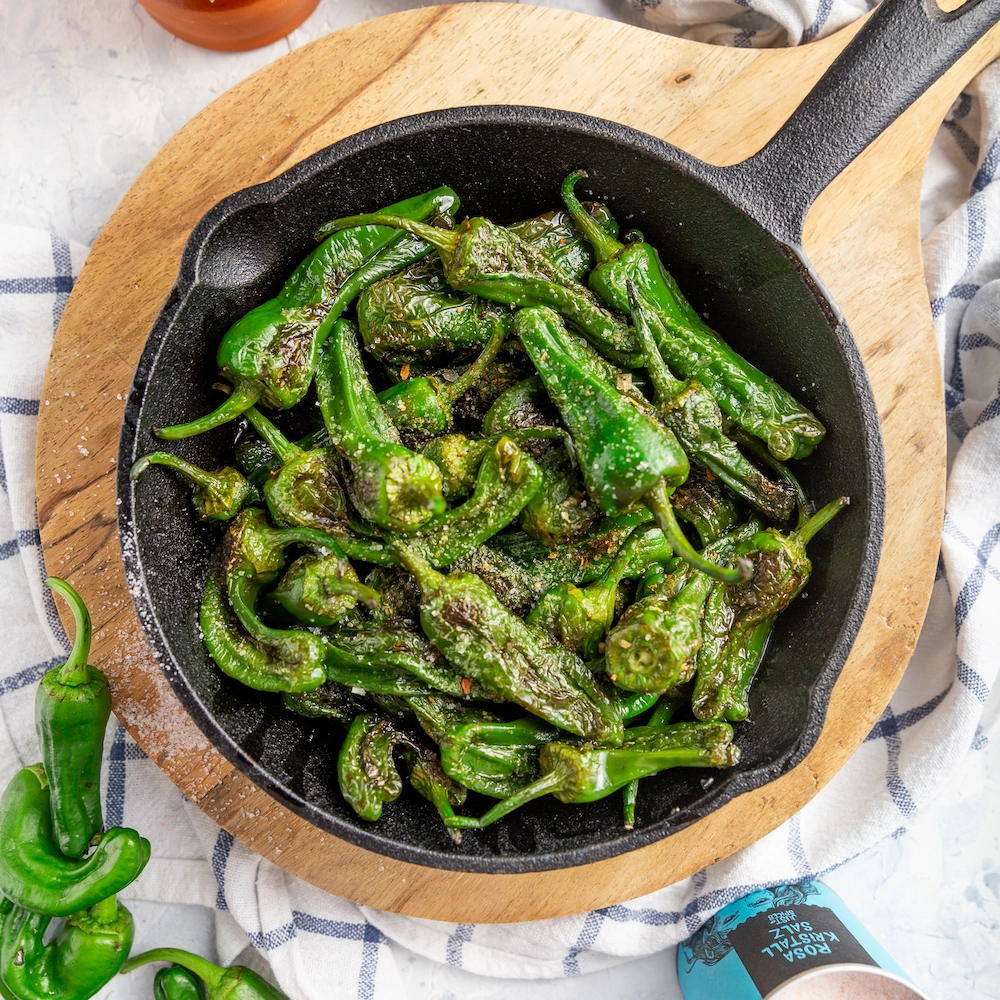
Pimientos de padrón are tiny green peppers originating from Galicia, which are fried in olive oil and seasoned with sea salt. Most are mild, but a few are fiery, earning them the saying:’some are hot, some are not.’.
A spin of the taste wheel.
These peppers, originating from padrón, are a popular choice among tapas bar patrons. The unpredictable heat adds an element of excitement—each bite is a thrilling gamble. They’re easy to make, yet their taste is unforgettable.
Where to sample them.
In Santiago de Compostela, Casa Marcelo offers delicious blistered pimientos. In Madrid, La Campana is a popular spot for tapas enthusiasts. Keep an eye out for them in local markets such as mercado central in Valencia.
Suggestions for relishing pimentón de padrón.
Consume them in their entirety: take a bite from the end, not the base.
A chilled pilsner complements the spiciness.
Don’t be afraid of the heat: the spicy ones are rare but exhilarating.
People also ask (paa).
What is the most famous food in spain?.
Paella is widely regarded as Spain’s most iconic dish, celebrated for its vivid hues and ability to bring people together. Originating in Valencia, it is a dish that combines rice, saffron, and local ingredients such as seafood or meat. It is renowned worldwide, making it an absolute must-visit for tourists.
Where can I locate genuine spanish cuisine?
Real Spanish cuisine shines in local markets like la boqueria in Barcelona or mercado de san miguel in Madrid. When looking for family-friendly restaurants, consider establishments like la pepica in Valencia or casa dani in Madrid, where traditional flavors take precedence over trendy gimmicks.
What are the most suitable utensils for preparing Spanish cuisine in the comfort of your own kitchen?
To prepare authentic Spanish dishes, acquire a paella pan for the perfect rice consistency, a high-quality olive oil for added taste, and a sharp knife for precise slicing of jamón. Online retailers such as la tienda provide a wide range of Spanish ingredients, including saffron and pimentón.
Is Spanish cuisine known for its spiciness?
Spanish food is typically mild, emphasizing the use of fresh ingredients and robust flavors such as garlic and olive oil. Occasionally, ingredients like pimientos de padrón or spicy chorizo are used, but they are not the main focus of the dish.
Infusing Spanish Cuisine into the Home.
Preparing these dishes in your own kitchen is a delightful way to maintain the essence of Spanish cuisine. Here’s a straightforward recipe for tortilla española to get you started:
How to Make Spanish Tortillas.
Ingredients::
4 medium potatoes, thinly sliced.
1 onion, finely diced (optional).
6 big eggs.
1 cup olive oil.
Season to your preference.
Instructions::
Heat olive oil in a non-stick skillet on medium heat. Combine potatoes and onions, allowing them to simmer gently until they become tender (approximately 15 minutes).
Remove any extra oil, saving a tablespoon. Beat eggs with salt, then incorporate the potato-onion mixture into the eggs.
Transfer to the skillet over low heat. Simmer until the base is firm (8–10 minutes).
To flip the pancake, use a plate as a makeshift spatula, and then cook the other side for approximately 5 to 7 minutes. Serve hot or cold.
